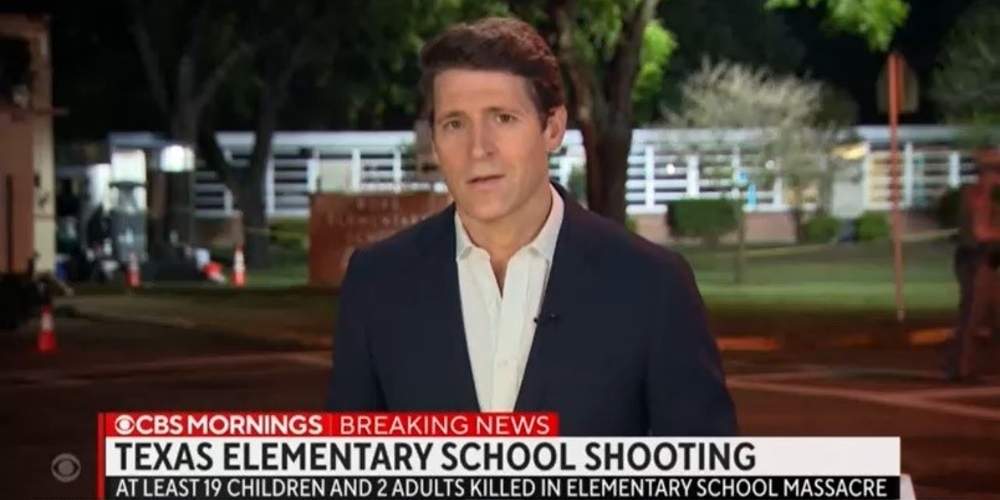We know that the copycat, generalized imitation, or media contagion effects are real, and yet the anti-liberty left and its media propaganda arm persist in promoting mass murder.
Have you noticed an all too familiar pattern in what is taking place in the nation’s socialist media? Just as they did after the Buffalo mass murder, the far-left’s propaganda arm is going hog wild in exploiting the tragedy in Uvalde, Texas. Each trying to outdo the other, but ten times worse than the previous crime.
Numerous studies on the subject have shown a high probability that with this level of wall-to-wall coverage, there will be another mass murder tragedy within 13 days. One of the more recent studies published in the Library of Medicine [PubMed.gov] entitled: Mass Shootings: The Role of the Media in Promoting Generalized Imitation concluded that while the media wasn’t directly responsible for these acts, they stated that:
In instances of mass shootings, the media appear largely responsible for providing the model to imitate. Although there are a variety of strategies that could function in tandem to alter the likelihood of a mass shooting, changing the way the media report mass shootings is one important step in preventing and reducing imitation of these acts. Furthermore, media-prompted imitation likely extends beyond mass shootings. A media effect has been shown with suicide,
It was just a day after the Buffalo attack that Reuters ran the following story with the headline: ‘Copycat’ mass shootings becoming deadlier, experts warn after New York attack:
Adam Lankford, a criminology professor at the University of Alabama, has studied trends in mass shootings over time.
…
Lankford’s study found that the “deadliest” shootings comprised 25% of mass public shootings from 1966 to 2009, but from 2010 to 2019 had increased to 50% of mass public shootings, in which there was “direct evidence that perpetrator was influenced by another specific attacker or attackers.”
Lankford said the rise in these copycat mass killings have a specific trend: the gunmen find their inspiration from the personal life details of previous mass shooters. “It’s not repeating the incident that inspires them. It’s the intimate details of their lives that promotes the influence,” he said.
We also noted this back on May 17, 2022:
We should all be aware of the phenomenon of media contagion, whereby wall-to-wall coverage, cynically exploited by the anti-liberty left for political purposes to suppress civil rights, also encourages further attacks.
Numerous other media sources have discussed this issue over the years:
- Mass Shootings and News Media: A Connection? (Newsweek)
- Here’s What We Know About The Contagion Effect Of Mass Shootings(The Huffington Post)
- How the Media Inspires Mass Shooters (Mother Jones)
- Mass Shootings May Be Affected by ‘Media Contagion’: Researchers (ABC news)
- Should media avoid naming the gunmen in mass shootings? (Associated Press)
- Mass Shootings Can Be Contagious, Research Shows (NPR)
- Mass shootings: Experts say violence is contagious, and 24/7 news cycle doesn’t help (NBC news)
- PBS’ Frontline irresponsibly ignores the “media contagion effect” and gives notoriety to school shooters (Media matters)
- How the media covers mass shootings has evolved. But is it better? (Boulder Weekly)
Suffice it to say, if several of them have made note of this phenomenon, they all should know of it. After all, they claim to be in the information business and this is a very serious topic that directly impacts their decision-making process. In short, they should have no excuse for not knowing about the issue of media contagion because it directly involves their business.
We can’t help but notice that it seems like we’re also witnessing another aspect of this perverse far-left media phenomena. Aside from generalized comments on the subject matter that refer to the Buffalo tragedy, it has been completely eclipsed by the new one. Whether this is by accident or design is hard to discern. However, this tendency could act as an additional impetus for the next chumbucket. There has also been news of shutting down all campuses of the Donna independent school district in Texas after a credible threat was reported to the police. A search of one of the suspects homes turned up an AK-47 and a “hit list of targeted students”.
We also discovered an interesting study that indicates why the anti-liberty left moves so fast in these situations. A study shows that the emotions surrounding a mass murder tragedy last only 3-4 days, after which they drop off significantly. This means they only have a narrow window to make “bipartisan appeals that draw on the emotional responses to mass shootings”.
So, how many human-shaped ‘ticking time bombs’ are out there like the two that have already gone off? How many psychologically damaged children, worsened by the COVID lockdowns are being ‘inspired’ by the wall-to-wall media coverage to imitate others? Unfortunately, the studies show that we’re going to have to wait for about another week or so to find out. Curiously enough, Senate Majority Leader Charles Schumer (D-N.Y.) is going to force a vote on gun control legislation after the Memorial Day recess on June 3. Long after the 4 days’ emotional response period to the current tragedy. But what would happen if another took place in a few days?



